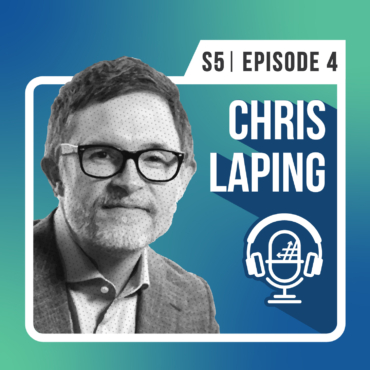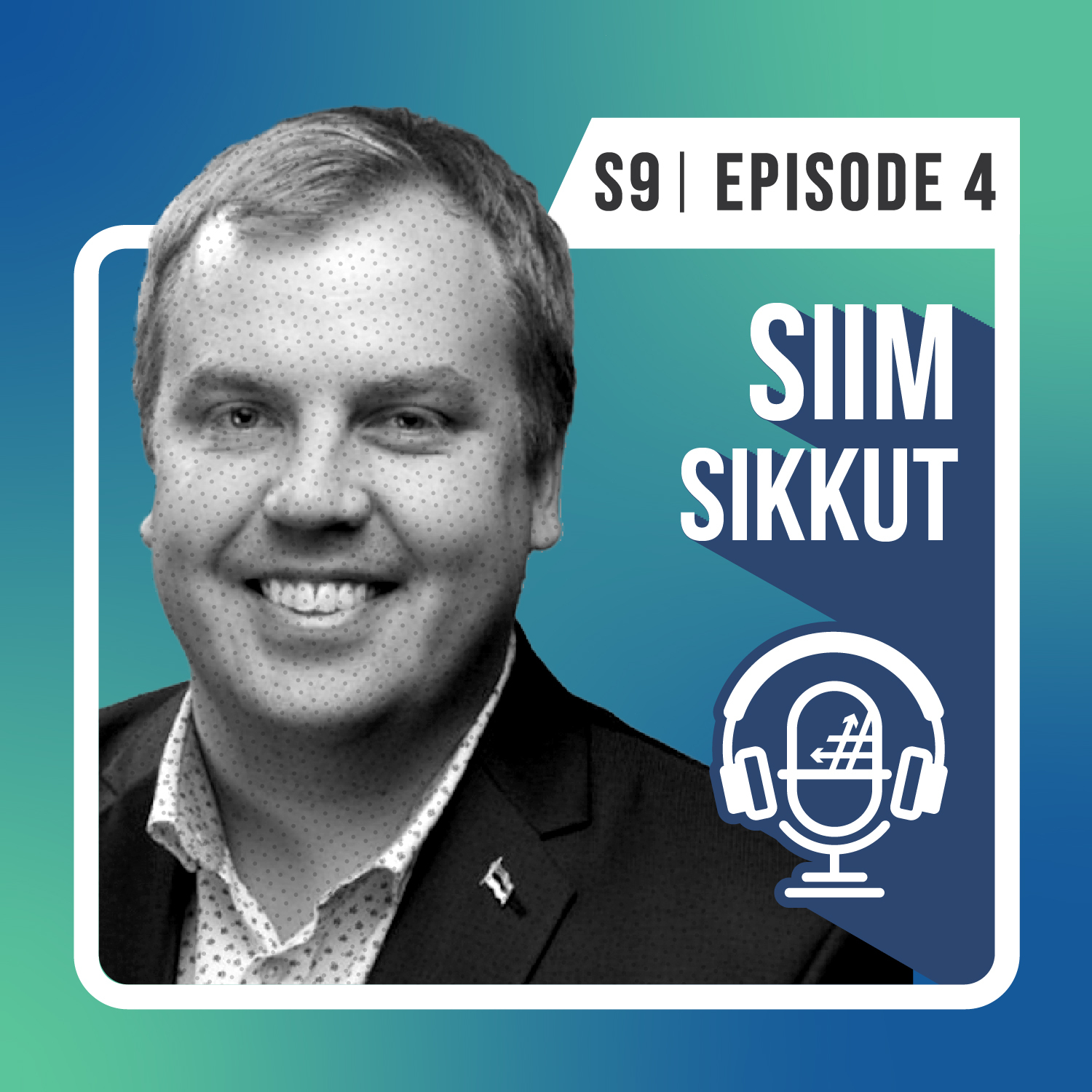S5 E4: Giving IT Teams a Place to Nest at Red Robin

IT teams are a critical part of any organization, but there’s a lot more to their jobs than just service tickets and routine maintenance.
In this episode, we’ll talk with author Chris Laping, who’s written a book about the human side of IT. He’ll explain why giving these staffers a seat at the table can help business leaders achieve big goals, accelerate digital transformation and quickly meet the changing needs of customers.
We know we’re hungry for some good advice. Let’s see what’s on the menu.
In this episode:
Chris’ history at Red Robin: CIO+ position
When I joined Red Robin to be the CIO, I had the typical scope of the CIO job. But during that journey at Red Robin, there were really two chapters.
The first chapter was about the brand working its way through a very deep recession that was affecting the business in a big way. It started as a startup and suddenly turned into an enterprise, so it skipped the whole scale-up phase. When the recession came, we had to work our way through that.
As we put the playbook together for chapter two, we realized that change was going to have to be the center of our agenda. Out of that was born this concept of business transformation. Every time we wanted to do something new in the marketplace, it was going to require in concert a change to technology, people, and processes. That’s when my CIO position became more of a CIO plus position.
Red Robin’s DNA of Change
When our management team recognized the fact that in retail and across the restaurant industry, it wasn’t the big companies eating the small but the fast eating the slow, we had to think, What do we have to do to build the DNA of being fast?
Of course, when changes are siloed and fragmented in an organization, and you have a collection of owners that have to work together and get on the same page, that naturally makes you slower. And because we were more company-owned stores, we thought, “Hey, if we could build the DNA of change and be super fast, we actually think we can get out in the market and crush the competition.”
Working on digital transformation
There was a broad range of things that we had to work on from then on. We had to do the basic blocking and tackling work related to our food cost systems and our labor planning. Our labor model needed to change.
At the same time, our team saw a lot of awesome digital transformation opportunities that were starting to emerge. When it comes to digital transformation, you got to start that journey inside. If people are not digital natives, then they’re naturally not going to give a good experience when our customers start using it.
So, one of the things we knew that we needed to focus on was how we were actually training our team members. The question that we had to solve was, “How do you bring a digital learning experience to them?”
Thankfully, it all resulted in good work. All we needed back then was our retention to improve by 1%—that was going to pay for all of our digital investments. And we saw a nine-point improvement in our retention! When that number goes down and you start to cash in on the benefits of creating a digital learning experience for your team members, it all just sets the table for lots of future investment and a lot of excitement in the organization around what’s possible.
Focusing on business metrics
One of the early lessons that jumped out at me was that the metrics we were using in IT to measure our success were separate from the overall business that we were supporting. I had to recognize that my job isn’t to create technical capacity; my job is to create business capability. I had to measure my success based on these business metrics that we’re paying attention to because my job wasn’t done until I actually make a difference.
When you do that, you get out of the business of calling it an IT project—it’s fundamentally never an IT project—it’s a business project that has technology enablement.
Yammer use case
If I had a shelf of hall of fame projects and things I loved doing as a CIO, Yammer was really an exciting time for us at Red Robin. The idea there was, How do you get ideas from the grassroots? It was a way for our team to be engaged and help in thinking of changes that are relevant to the restaurant and our guests. If we could create a direct channel for our team members that served our guests every day, we would quickly expose what some of the biggest pain points were.
One project that we had—which was a case of trying to save money—we set the rules and parameters up for that project to say, “When you give us ideas, it cannot come at the cost of something for the team member and come at the expense of the guests. And it can’t be a one-hit-wonder.” So using a channel like Yammer was the perfect way to reach out to these team members for ideas. And that’s where our kids’ cup project started, which went on for years and helped us save costs and help the environment.
Working with Coffee and Bagel brands
When Red Robin had a really successful turnaround, I had already been there for eight years, and honestly, I was a little tired and burned out. But more importantly, I thought there was a universal story around change and transformation, and innovation that other organizations could benefit from.
So, I went out and wrote a book about my Red Robin experience. At that time, books about IT and for IT were not written by practitioners. They’re being written by academics, people who studied us, and consultants, people who supported us, but not people who had actually walked a mile in our shoes. I decided to leave Red Robin, wrote a book wanting to do that storytelling around transformation and change, and then my book ended up becoming a best seller.
From there, I ended up hitting the road for three years and doing a lot of speaking engagements. In three years of that journey, I met coffee and bagel brands who were really focused on turning around their business and doing a lot of cultural transformation as well as technology transformation.
I brought them on as a client and started doing work with them. Eventually, one thing led to another. The company asked if I would consider giving them all of my capacity, leading the team, and rolling up my sleeves. And once again, like the Red Robin experience, working intimately in a turnaround transformation opportunity or environment.
Building sustainable change
To build change that is sustainable, you got to get your team to get their arms around it. And again, the best way to get their arms around it is to do digital transformation inside out.
That’s why learning and development are really important—to start creating this comfort level around that technology. Because I just truly believe that if you want your customers to love you, your team members have to love you. If your team members only like you, then your customers will only like you. And by the way, if your team members hate you and they hate the place they work, they are going to piss off customers who now hate you and will not come back.
This notion holds true with digital. The team members have got to love it, and they got to talk about it and they got to trumpet it, and they got to be a part of the journey of the evolution of it. And that’s why connecting at the grassroots and making sure you’re always plugged into the pain points is so critical, again, to build that long-term sustainability. Otherwise, it’s a one-hit-wonder. It would only be a flavor of the week, and then everybody gets bored and moves on.
Making #ShiftHappen
To make shift happen, first and foremost, there should be a mind shift around what your job in IT is and what you want to accomplish. When I started my career, what I understood was that my job was about technical capacity. But what I learned in my journey is that there is a much more compelling role for IT in the organizations we serve today. We can be collaborators, facilitators, and innovators. But to do that, we have to have strong capabilities in bringing people together.
I have realized that my job and the business I’m in is actually not about the bits and bytes. If I can sharpen my tools related to facilitation and bringing people together, IT is a constant lightning rod in organizations for change. And if we seize that moment, we can build a better brand for IT.
Today’s takeaway from Chris:
“The fact is, no matter what you do, change is going to be slow. It’s going to take a while for your customers to catch up and to prefer it. You just have to prepare yourself for that.”
Connect with Chris:
Look out for Chris’s podcast: Inspiring, Crazy Loyalty, a podcast about IT leadership and change.
Get a free digital copy of Chris’ book—connect with him on LinkedIn: Chris Laping | LinkedIn
Subscribe where you get your podcasts! Search for “#ShiftHappens” in your favorite podcast app.
With over 20 years of business and technology experience, Dux has driven organizational transformations worldwide with his ability to simplify complex ideas and deliver relevant solutions. He serves as the Chief Brand Officer of AvePoint who has authored the LinkedIn Learning course How to Build Your Personal Brand, the book SharePoint for Project Management, as well as numerous whitepapers and articles. As a public speaker, Dux has delivered engaging, interactive presentations to more than 25,000 people at leading industry events around the world. He also hosts the modern workplace podcast #shifthappens that focuses on how leading organizations navigated their business transformation journey. Dux advocates tirelessly for inclusion, using technology for good, and philanthropic initiatives. Connect with him: http://dux.sy



